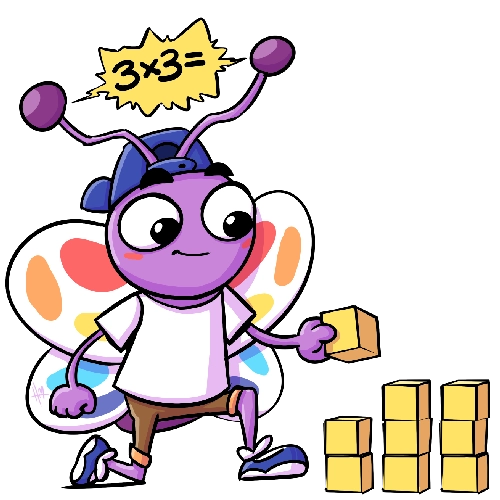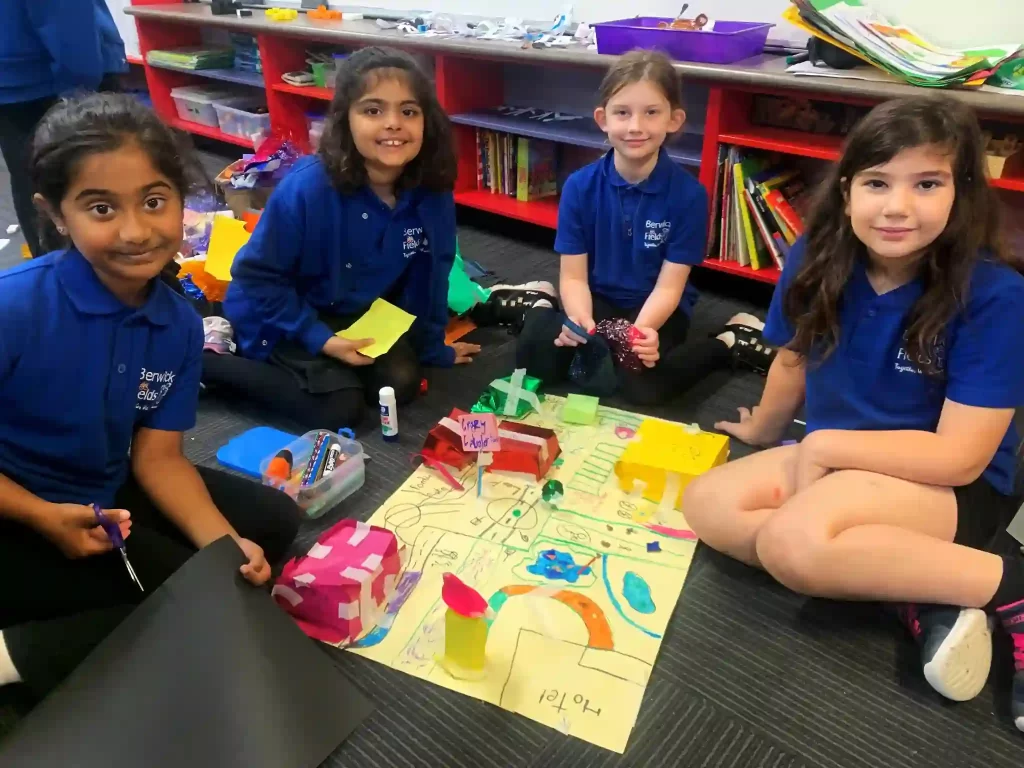
Numeracy

At Berwick Fields Primary School we are committed to providing rich, engaging and purposeful learning opportunities to explore the concepts in Mathematics.
Students participate in Mathematics lessons for a minimum of five hours per week, where their learning is scaffolded to provide access for learners at all levels. Our Mathematics program incorporates hands on materials, authentic tasks, student led investigations and the use of digital technologies.
The Victorian Curriculum forms the basis of our Mathematics program at BFPS and is organised around the interaction of three content strands and four proficiency strands.
The content strands are Number and Algebra, Measurement and Geometry, and Statistics and Probability. They describe what is to be taught and learnt.
Number & Algebra
Measurement & Geometry
Statistics & Probability
Number and place value
(F–8)
Using units of measurement (F–10)
Chance (1–10)
Fractions and decimals (1–6)
Shape (F–7)
Data representation and interpretation (F–10)
Real numbers (7–10)
Geometric reasoning (3–10)
N/A
Money and financial mathematics (1–10)
Location and transformation (F–7)
N/A
Patterns and algebra (F–10)
Pythagoras and trigonometry (9–10)
N/A
Linear and non-linear relationships (7–10)
N/A
N/A
Number & Algebra
Number and place value
(F–8)
Fractions and decimals (1–6)
Real numbers (7–10)
Money and financial mathematics (1–10)
Patterns and algebra (F–10)
Linear and non-linear relationships (7–10)
Measurement & Geometry
Using units of measurement (F–10)
Shape (F–7)
Geometric reasoning (3–10)
Location and transformation (F–7)
Pythagoras and trigonometry (9–10)
N/A
Statistics & Probability
Data representation and interpretation (F–10)
N/A
N/A
N/A
N/A
Number and algebra are developed together, as each enriches the study of the other.
Students apply number sense and strategies for counting and representing numbers.
They explore the magnitude and properties of numbers. They apply a range of strategies for computation and understand the connections between operations.
They recognise patterns and understand the concepts of variable and function.
They build on their understanding of the number system to describe relationships and formulate generalisations.
They recognise equivalence and solve equations and inequalities. They apply their number and algebra skills to conduct investigations, solve problems and communicate their reasoning.
Measurement and geometry are presented together to emphasise their relationship to each other, enhancing their practical relevance.
Students develop an increasingly sophisticated understanding of size, shape, relative position and movement of two-dimensional figures in the plane and three-dimensional objects in space.
They investigate properties and apply their understanding of them to define, compare and construct figures and objects.
They learn to develop geometric arguments. They make meaningful measurements of quantities, choosing appropriate metric units of measurement.
They build an understanding of the connections between units and calculate derived measures such as area, speed and density.
Statistics and probability initially develop in parallel, and the curriculum then progressively builds the links between them.
Students recognise and analyse data and draw inferences. They represent, summarise and interpret data and undertake purposeful investigations involving the collection and interpretation of data.
They assess likelihood and assign probabilities using experimental and theoretical approaches.
They develop an increasingly sophisticated ability to critically evaluate chance and data concepts and make reasoned judgements and decisions, as well as building skills to critically evaluate statistical information and develop intuitions about data.
